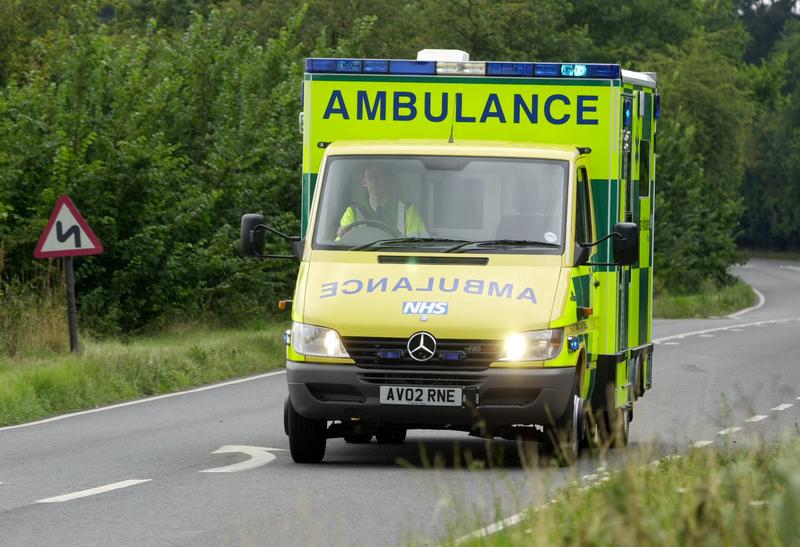Ambulance service in Essex signals Airwave pilot success
EEAST has successfully rolled out a new digital radio system to ambulance staff in Essex in an initiative that will eventually touch counterparts in the rest of England.


The East of England Ambulance Service NHS Trust (EEAST) has successfully rolled out a new Airwave-based digital radio system across Essex, as part of a country-wide initiative to enhance communications and ensure all emergency services can talk to one another more easily, particularly in the event of a major incident.
Other counties covered by the trust will be next to benefit from the new system, with the Department of Health mandating that it is rolled out to all ambulance services as part of the Ambulance Radio Programme, in England by 2009.
Within Essex, emergency ambulances, rapid response vehicles and patient transport service vehicles have all been equipped with the new technology as part of the drive to enhance call and data message quality between communications hubs and staff on the road.
EEAST was formed in July last year, merging together the former Bedfordshire, Essex, Hertfordshire and East Anglian Ambulance Services. It services a combined population of more than five million people and responded to 517,473 emergency incidents and provided more than 1.4 million non-urgent patient transport journeys in 2006/2007.
"We now have clearer, more succinct coverage which is excellent with no dead spots or bleed over. Our crews think it's the best thing since sliced bread. It enables them to have clear communication with the control room and takes away any supposition or bad lines or 'What number did you say the patient was at?'" said Paul Leaman, EEAST's chief operating officer for Essex.
"Many people asked why we moved to a regional ambulance service and what the benefit is. Essex was a good enough 3 star trust before but we now benefit from the added resilience and robustness if our control room falls over due to power failure or flooding. Because we're all on the same system we can still take those calls and dispatch them."
Leaman added: "The ambulance service in Essex is pleased to have been a pilot site. For so long the NHS has been knocked but it has now given the ambulance service in England the very best we can have with a radio system that's future proofed and robust."
Get the ITPro daily newsletter
Sign up today and you will receive a free copy of our Future Focus 2025 report - the leading guidance on AI, cybersecurity and other IT challenges as per 700+ senior executives
Police services across Britain already use the Airwave system and the fire service is readying itself to roll out the technology later this year. When all of the emergency services divisions are on the same system, it will make it easier to communicate and collaborate in the case of major incidents in addition to easing the transfer of information between agencies to help deal more effectively with certain situations.
"When dealing with an incident, big or small, the availability of information can have an incredible impact on our effectiveness," said Paramedic Steve Heard, a Harlow operations manager for EEAST. "Using Airwave enables us to process and share information more quickly and accurately. We have had only positive feedback from our crews, who have already noticed the improvement Airwave is having on our operations, where saving time can mean saving lives."
Quentin Armitage, national implementation director for the Ambulance Radio Programme, Department of Health, added: "We are delighted with the positive feedback we have received from users of the new Airwave service in Essex. The lessons we have all learned from the roll-out in this pilot area will help ensure successful delivery of the programme nationally. Ultimately better communications for the Ambulance Service will enable them to continue improving patient care."
Image: EEAST
Maggie has been a journalist since 1999, starting her career as an editorial assistant on then-weekly magazine Computing, before working her way up to senior reporter level. In 2006, just weeks before ITPro was launched, Maggie joined Dennis Publishing as a reporter. Having worked her way up to editor of ITPro, she was appointed group editor of CloudPro and ITPro in April 2012. She became the editorial director and took responsibility for ChannelPro, in 2016.
Her areas of particular interest, aside from cloud, include management and C-level issues, the business value of technology, green and environmental issues and careers to name but a few.
-
 Should AI PCs be part of your next hardware refresh?
Should AI PCs be part of your next hardware refresh?AI PCs are fast becoming a business staple and a surefire way to future-proof your business
By Bobby Hellard Published
-
 Westcon-Comstor and Vectra AI launch brace of new channel initiatives
Westcon-Comstor and Vectra AI launch brace of new channel initiativesNews Westcon-Comstor and Vectra AI have announced the launch of two new channel growth initiatives focused on the managed security service provider (MSSP) space and AWS Marketplace.
By Daniel Todd Published